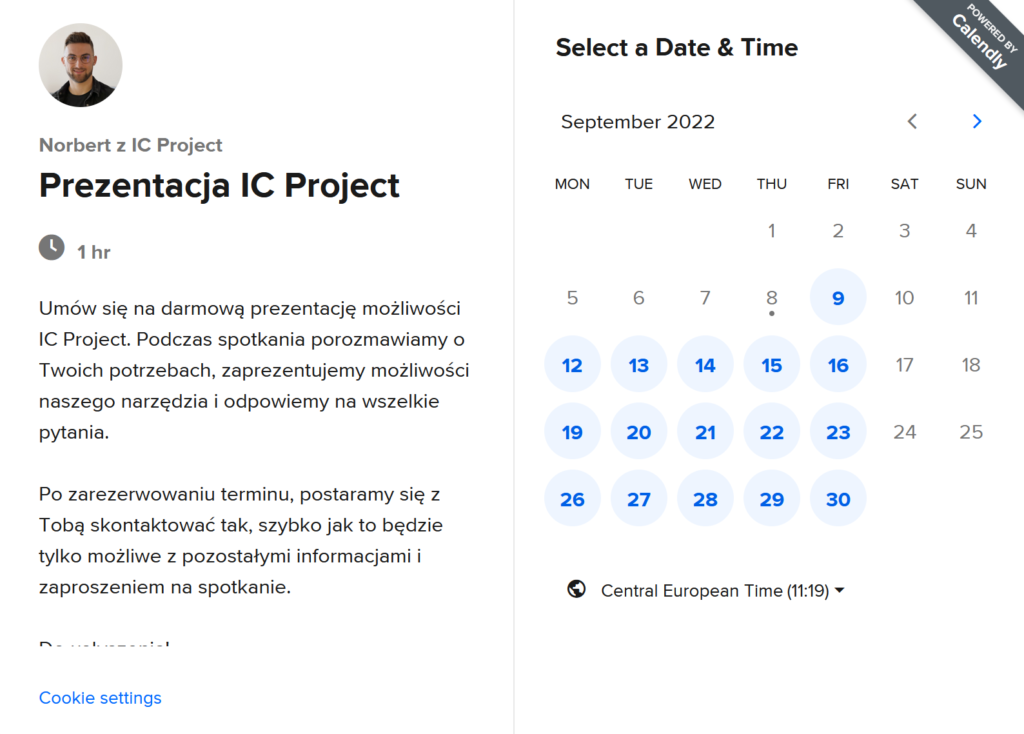Managing a team’s workload is one of the key challenges faced by managers and project leaders. An excessive workload can lead to burnout, decreased efficiency, and even mistakes that may have serious consequences for the entire company. To prevent this, having a tool that allows precise planning and monitoring of employee load is essential.
The Workload Module in IC Project is a comprehensive planning hub for the entire team, enabling task scheduling for weeks ahead while visually displaying each employee’s load on charts. This makes it easy to monitor how much each team member is burdened and adjust the work plan to ensure optimal resource utilization.
What is an excessive workload?
Excessive workload occurs when an employee is assigned more tasks than they can efficiently complete within the available time frame. This situation leads to overwork, stress, and often a decline in the quality of work. Excessive workload can result from poor management, lack of proper planning, or improper task allocation within the team. In the long run, such overload may lead to burnout, decreased motivation, and even employee turnover, which in turn negatively affects the entire organization. Therefore, it is crucial for managers to properly manage employee workload by using proven methods and tools that help balance the amount of work employees face daily.
Why is managing employee workload so important?
Managing employee workload is a process that involves effectively distributing tasks and responsibilities to avoid both overloading and underloading employees. In practice, this means not only monitoring the number of tasks but also considering their difficulty, the time needed for completion, and the available resources. Here are a few key reasons why managing employee workload is so essential:
Increased efficiency
Employees who are appropriately assigned tasks are more productive and effective. Too many responsibilities can lead to a decline in work quality, as employees may feel overwhelmed and unable to fully focus on their tasks.
Preventing burnout
Excessive workload is one of the main contributors to burnout. Prolonged task overload can lead to frustration, chronic fatigue, and a lack of motivation to work.
Better time management
Effective workload management allows for better utilization of available time, ensuring that projects and tasks are completed on time. This leads to smoother and more efficient organizational operations.
Boosting team morale
Employees who feel that their work is well-organized and properly managed tend to have higher morale. They are more engaged in their duties, resulting in a better work atmosphere and lower turnover within the team.
Consequences of ignoring employee work overload
Ignoring employee workload can lead to several serious consequences that affect the entire team and organization. First and foremost, excessive workload without adequate support and management results in decreased employee efficiency and productivity. Overloaded employees are unable to effectively complete their assigned tasks, leading to errors, delays, and a decline in work quality. In the long run, this situation can impact overall team performance, causing project delays and issues with meeting deadlines.
Prolonged work overload often leads to burnout, which manifests as chronic stress, emotional exhaustion, and a loss of motivation. Employees who are consistently overloaded may feel frustrated and burned out, ultimately leading to high staff turnover. High turnover generates additional costs related to recruiting and training new employees, while also affecting organizational stability and hindering long-term growth.
Ignoring employee workload also has serious health consequences. Overburdened employees are more prone to health problems such as stress, headaches, digestive issues, and other ailments. Long-term stress can lead to more frequent sick leaves, further disrupting team workflow and reducing efficiency.
Workload stress can also strain team relationships. Employees who feel overloaded may become less cooperative, less open to communication, and more prone to conflicts. These tensions can negatively affect team morale, lowering overall group effectiveness.
Additionally, ignoring workload issues impacts customer satisfaction. Stressed employees may be less responsive to customer needs, leading to a decline in service quality and customer dissatisfaction. In the long run, this can result in customer loss, negative reviews, and damage to the company’s reputation.
Overburdening employees can also stifle innovation and creativity. Overloaded employees have less time and energy to engage in creative processes and develop new ideas. Organizations that fail to evenly distribute tasks risk losing their competitive edge and innovativeness, making them less able to quickly adapt to changing market conditions.
Finally, poor workload management leads to decreased employee engagement. Overwhelmed employees are less likely to take initiative or invest in the company’s growth. Long-term neglect of workload issues can lead to a general decline in employee engagement, further reducing team efficiency and morale.
Effective methods for managing employee workload
To manage employee workload effectively, managers need to implement a range of proven strategies and tools. Regular monitoring of employee workload is the foundation of efficient management. Managers should continuously analyze the number of tasks assigned to individual employees and the time required for their completion. This allows for the quick identification of situations where employees are either overburdened or underutilized. Monitoring should occur at the team level to ensure an even distribution of tasks and to prevent some employees from being overwhelmed while others have too little to do.
Task prioritization is another key aspect of effective workload management. Not all tasks hold the same level of importance, so managers must be skilled in setting priorities to ensure that the most critical and urgent tasks are addressed first. Regularly reviewing task lists and helping employees prioritize their work ensures better time and resource management, leading to improved efficiency. Employees who are clear on task priorities can focus on completing them, reducing the risk of delays and mistakes.
Delegation is one of the most crucial skills a manager can have. It involves assigning the right tasks to the right people, considering their skills, experience, and current workload. Effective delegation maximizes team potential and helps alleviate the workload of employees who are under the most strain. It also enables skill development by allowing employees to take on new, more challenging tasks, which is essential for their professional growth. However, delegation must be done thoughtfully, taking into account each team member’s capabilities and inclinations.
Setting realistic deadlines for tasks is another critical component of managing employee workload. One of the main reasons for overloading employees is setting unrealistic deadlines that are impossible to meet. Managers should consider the actual capacity of their team and set achievable deadlines. Additionally, building in a safety margin can allow for flexibility in case of unexpected problems or delays. Realistic deadlines help minimize stress related to task completion and allow employees to manage their time more effectively, improving the quality of work.
Technological support plays a crucial role in managing employee workload. Modern project management systems, such as IC Project, offer advanced features for precise planning, monitoring, and analyzing employee workload. With these tools, managers can continuously track team workload and respond quickly to emerging issues. This enhances time and resource management, improving the overall efficiency of the team.
How does IC Project help manage employee workload?
IC Project is one of the leading tools for work organization and project management, offering advanced features for monitoring and managing employee workload. The workload module in IC Project is an excellent solution for companies that want to efficiently plan work and avoid overburdening their employees.
The workload module in IC Project serves as a comprehensive work planning center for the entire team. Here, you can plan work weeks in advance, and the entire team’s workload is displayed on visual charts for each user. The system visualizes how heavily each employee is burdened on a daily basis, making it easy to identify where an employee has too much or too little work. The visual charts in the workload module are a key tool for managers who want to have full control over their team’s workload. Special colors on the charts allow for quick insights, and expanding each chart reveals the specific tasks contributing to the workload. Each user’s chart is linked to a special task timeline, which shows the tasks affecting their workload during a given period.
The visual charts in the workload module are a key tool for managers who want to maintain full control over their employees’ workloads. Specific colors on the charts allow for quick insights, and expanding each chart shows the reasons behind a particular workload. Each user’s chart is linked to a dedicated timeline of tasks that impact the workload during that period.
Effective management of employee workload is crucial for ensuring a healthy and productive work environment. An excessive workload can lead to serious consequences, such as decreased efficiency, burnout, health problems, and higher employee turnover. To prevent this, it’s worth using tools like IC Project, which enable precise planning and monitoring of team tasks. The workload module in IC Project allows managers to continuously monitor employee workload and adjust work plans accordingly, leading to better resource utilization and increased efficiency.







